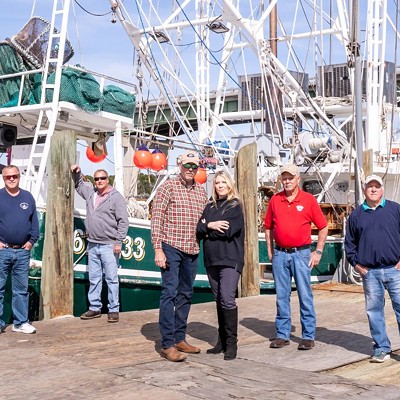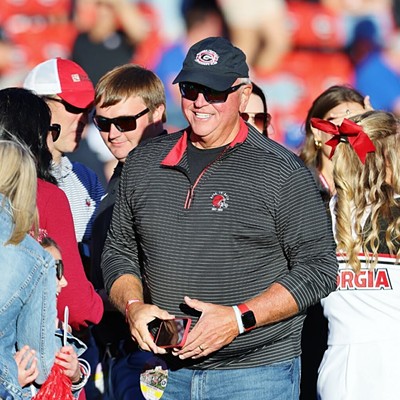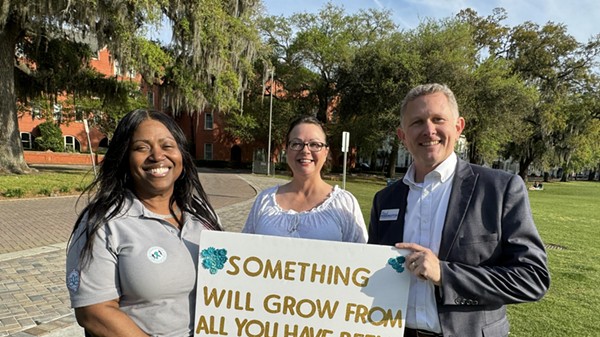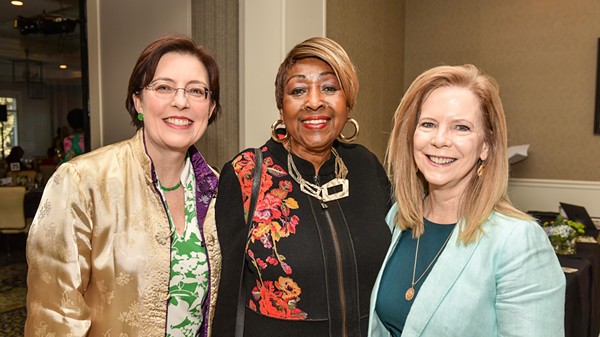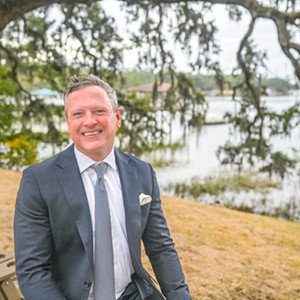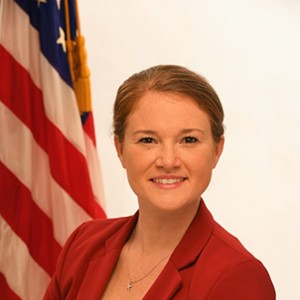Nutcracker unplugged
[
{
"name": "Air - MedRect Combo - Inline Content 1",
"component": "14680855",
"insertPoint": "7",
"requiredCountToDisplay": "5",
"parentWrapperClass": "fdn-ads-inline-content-block"
},{
"name": "Air - MedRect Combo - Inline Content 2",
"component": "14680856",
"insertPoint": "15",
"requiredCountToDisplay": "9",
"parentWrapperClass": "fdn-ads-inline-content-block"
},{
"name": "Air - SVP - Leaderboard - Inline Content - 2",
"component": "16852291",
"insertPoint": "10",
"requiredCountToDisplay": "10",
"parentWrapperClass": "fdn-ads-inline-content-block"
},{
"name": "Air - SVP - Leaderboard - Inline Content - 3",
"component": "16852292",
"insertPoint": "20",
"requiredCountToDisplay": "18",
"parentWrapperClass": "fdn-ads-inline-content-block"
},{
"name": "Air - SVP - Leaderboard - Inline Content - 1",
"component": "16852290",
"insertPoint": "25",
"requiredCountToDisplay": "22",
"parentWrapperClass": "fdn-ads-inline-content-block"
}
]
In a time of dwindling budgets and improved technology, it was inevitable that ballet and concert-goers would one day get used to hearing CD players instead of orchestras.
But this weekend Savannah Danse Theatre (SDT) takes a step into the not-too-distant past by performing The Nutcracker at the Lucas Theatre to the accompaniment of a full orchestra comprising many former Savannah Symphony players.
Having the live orchestra upgrades the production in many ways, explains Artistic Director Suzanne Braddy.
It brings in more talent, it brings in a different quality of people to see the production and its a huge learning experience for the dancers themselves, she says.
The 28-member Savannah Danse Theatre Orchestra will be directed by Mary Woodmansee Green, music director & conductor of the Hilton Head Orchestra.
Its become so rare these days to have a live ballet performance, Green says. People have to realize that Savannah is probably the smallest -- or certainly one of the smallest -- cities in the country to have a Nutcracker performed with a live orchestra.
Because the orchestra playing this weekend is somewhat smaller than a standard symphony orchestra, theyll rely on an arrangement written specifically for mid-sized ensembles.
The only real difference is were using seven violins, whereas the New York City ballet probably hires about 15 violinists, says flutist Lorraine Jones, who also acted as orchestra contractor for this performance.
Weve taken out some of the doubling, says Green. Actually, it would be hard to fit many more musicians into that orchestra pit anyway.
Braddy has set this years show in Savannah circa 1910, with period costumes and local references -- for example, the Snow Flakes will be called Dixie Crystals, and Mother Ginger is now Emma Kelly.
In an echo of last years celebrity cameo by Paula Deen, famed local chef Richard Gottlieb will portray the chef who supervises the Bakers in Act II as they create Claras crown.
For purists like Braddy, Green and Jones, staging The Nutcracker as it was intended to be staged is an opportunity to rediscover some aspects of their respective art forms.
The difference between dancing to a CD player and to a live orchestra is like the difference between black and white, Braddy says.
Its incredible, the energy that you as a dancer sense coming on the stage and watching that conductor. Its just remarkable that that music is being played just for you. Its an incredible rush.
Its not only dancers who get that rush. Despite its reappearance like clockwork each December on stages all over the country, Tchaikovskys music for The Nutcracker remains one of the most highly regarded works in the classical repertoire.
The musicians are thrilled not only to be a part of this ballet, but theyre thrilled to play this specific work, Jones says. No one ever gets tired of playing The Nutcracker. Its a fabulous piece, and one that everybody looks forward to playing.
Green, who directs the Kennett Symphony in Philadelphia as well as the Hilton Head Orchestra, agrees.
Its interesting music. People dont usually just listen to The Nutcracker, they watch it. But if you close your eyes, the storys all there, Green says.
My group in Philadelphia has 31 performances of The Nutcracker every December. The musicians never get tired of playing it. By the end of the run
theyre physically tired, but not of the music itself.
Unfortunately, prerecorded accompaniments are so commonplace nowadays that many of Braddys dancers have never rehearsed or performed to live music. Braddy says that upcoming rehearsals with a live orchestra have served to focus the dancers.
Theyve really stepped it up a notch. Knowing the live orchestra will be there has made them work harder, she says. Theyve had to know the music better, theyve had to count, theyve had to be more aware.
The one big advantage of a CD player, however, is you dont have to pay it. Because musicians are compensated for rehearsals as well as performances, Braddy must make the most of just a few live rehearsals.
Weve made the dancers aware since August that we will only really have one dress rehearsal, Braddy says. If they mess up were not going to be able to push the rewind button.
Accompanying a ballet poses challenges on the music side as well.
The conductor faces some real challenges, says Jones. She has to follow whats going onstage, which she doesnt ordinarily have to do.
Green and Jones say theyve worked with Braddy on the desired tempos for each passage.
Weve gotten some rehearsal tempos from Suzanne, so we have an idea of what the dancers will need, Jones says. But the musicians still need to be on their toes, no pun intended. They have to be flexible and reciprocate with the dancers. It all adds more excitement. It adds spontaneity.
Maestro Green says no performance will be the same.
This is like any other theatrical production, where the actors get more comfortable with their lines with each performance, Green says. The last performance is certainly going to be slightly different than the first one, theres no question about it -- and that has a lot to do with the dancers, with my temperament, with the weather, with a lot of things.
Green says that while conducting a ballet, I cant take the latitude Im used to taking -- I have to nail it. If I have a sight cue, which I never get to use in an ordinary performance, I have to get that right -- whether its timing something with a dancers kick or whatever. Thats part of what makes it exciting to have a live orchestra accompaniment.
Between the Savannah Symphonys demise, labor union requirements and the need to raise funds, its been no easy task pulling together enough trained musicians to make up a fully functioning orchestra for the performance.
Savannah Danse Theatre initially budgeted about $40,000 for the performance, the bulk of which will go to pay musicians for rehearsal and performance time.
Raising the money has been primarily the task of the SDT board of directors, which has solicited private and corporate donations as well as grants to fund the show.
One of the largest single donors was the group Savannah Friends of Music;
a $6,000 grant from that group, which supports music education, will help fund the two special school performances this Thursday and Friday.
Of the 28 musicians contracted for The Nutcracker, only eight live outside the region, Jones says.
The musicians that remain here are still here because theyve made Savannah their home, with or without a symphony, she adds. They have families here, kids in school here, and many teach here.
Green says of Jones work in gathering the musicians that the players shes assembled have been the cream of the crop.
Jones says this years Nutcracker will be a treat for local musicians because we have a series of performances. Thats much more fun than to practice your brains out for a one-shot deal.
Jones and Green agree that this Thursday and Fridays sold-out performances for local school audiences are especially important in spreading the word about the importance of the arts.
Performing those kinds of concerts really warms you up inside, knowing that there are so many kids that dont have a chance to see the art form onstage -- especially now that theres no symphony here, Jones says.
Green says the school shows are important as an indicator of community involvement, which is key for the arts to thrive in any community.
In any symphony or fine arts situation, the ticket sales at best only
constitute about 50 percent of the funding of the group -- the other
fifty percent always has to come from somewhere else. Thats why its important for the community to embrace a performance like this and take an interest and make sure it can happen again, she says.
The children being taken to the symphony twenty years ago are the ones coming back to see us today, she says. Theyre crucial.
As for dancers, backing up Braddys assertion that the live orchestra will attract more talent to the production is the fact that several SDT alumnae are returning to perform in this weekends show.
Its wonderful it worked out that they were all available, Braddy says. Its made the production even stronger with a more mature core group.
Will there be future Nutcrackers with live orchestras in Savannah?
I think Lorraine and Mary and I, we were initially a little afraid to say anything about next year, Braddy says.
We were thinking, if we could just get it done this once. But of course wed love to have it happen every year, and possibly do other ballets as well. The Lucas Theatre is very open to performances like this.
The musicians are psyched up and happy to do this with Suzanne, Jones says.
Everyone hopes something can continue. Itll be much easier the second time around.
Savannah Danse Theatre presents The Nutcracker in Savannah at The Lucas Theatre, 32 Abercorn St. Performances are 3 p.m. and 8 p.m. Saturday Dec. 10, and 2 p.m. Sunday Dec. 11.
The performance features live music by the Savannah Danse Theatre Orchestra, under the direction of Hilton Head Orchestra Music Director and Conductor Mary Woodmansee Green.
Tickets are $30, $24 and $16. For more information, call 525-5050.
But this weekend Savannah Danse Theatre (SDT) takes a step into the not-too-distant past by performing The Nutcracker at the Lucas Theatre to the accompaniment of a full orchestra comprising many former Savannah Symphony players.
Having the live orchestra upgrades the production in many ways, explains Artistic Director Suzanne Braddy.
It brings in more talent, it brings in a different quality of people to see the production and its a huge learning experience for the dancers themselves, she says.
The 28-member Savannah Danse Theatre Orchestra will be directed by Mary Woodmansee Green, music director & conductor of the Hilton Head Orchestra.
Its become so rare these days to have a live ballet performance, Green says. People have to realize that Savannah is probably the smallest -- or certainly one of the smallest -- cities in the country to have a Nutcracker performed with a live orchestra.
Because the orchestra playing this weekend is somewhat smaller than a standard symphony orchestra, theyll rely on an arrangement written specifically for mid-sized ensembles.
The only real difference is were using seven violins, whereas the New York City ballet probably hires about 15 violinists, says flutist Lorraine Jones, who also acted as orchestra contractor for this performance.
Weve taken out some of the doubling, says Green. Actually, it would be hard to fit many more musicians into that orchestra pit anyway.
Braddy has set this years show in Savannah circa 1910, with period costumes and local references -- for example, the Snow Flakes will be called Dixie Crystals, and Mother Ginger is now Emma Kelly.
In an echo of last years celebrity cameo by Paula Deen, famed local chef Richard Gottlieb will portray the chef who supervises the Bakers in Act II as they create Claras crown.
For purists like Braddy, Green and Jones, staging The Nutcracker as it was intended to be staged is an opportunity to rediscover some aspects of their respective art forms.
The difference between dancing to a CD player and to a live orchestra is like the difference between black and white, Braddy says.
Its incredible, the energy that you as a dancer sense coming on the stage and watching that conductor. Its just remarkable that that music is being played just for you. Its an incredible rush.
Its not only dancers who get that rush. Despite its reappearance like clockwork each December on stages all over the country, Tchaikovskys music for The Nutcracker remains one of the most highly regarded works in the classical repertoire.
The musicians are thrilled not only to be a part of this ballet, but theyre thrilled to play this specific work, Jones says. No one ever gets tired of playing The Nutcracker. Its a fabulous piece, and one that everybody looks forward to playing.
Green, who directs the Kennett Symphony in Philadelphia as well as the Hilton Head Orchestra, agrees.
Its interesting music. People dont usually just listen to The Nutcracker, they watch it. But if you close your eyes, the storys all there, Green says.
My group in Philadelphia has 31 performances of The Nutcracker every December. The musicians never get tired of playing it. By the end of the run
theyre physically tired, but not of the music itself.
Unfortunately, prerecorded accompaniments are so commonplace nowadays that many of Braddys dancers have never rehearsed or performed to live music. Braddy says that upcoming rehearsals with a live orchestra have served to focus the dancers.
Theyve really stepped it up a notch. Knowing the live orchestra will be there has made them work harder, she says. Theyve had to know the music better, theyve had to count, theyve had to be more aware.
The one big advantage of a CD player, however, is you dont have to pay it. Because musicians are compensated for rehearsals as well as performances, Braddy must make the most of just a few live rehearsals.
Weve made the dancers aware since August that we will only really have one dress rehearsal, Braddy says. If they mess up were not going to be able to push the rewind button.
Accompanying a ballet poses challenges on the music side as well.
The conductor faces some real challenges, says Jones. She has to follow whats going onstage, which she doesnt ordinarily have to do.
Green and Jones say theyve worked with Braddy on the desired tempos for each passage.
Weve gotten some rehearsal tempos from Suzanne, so we have an idea of what the dancers will need, Jones says. But the musicians still need to be on their toes, no pun intended. They have to be flexible and reciprocate with the dancers. It all adds more excitement. It adds spontaneity.
Maestro Green says no performance will be the same.
This is like any other theatrical production, where the actors get more comfortable with their lines with each performance, Green says. The last performance is certainly going to be slightly different than the first one, theres no question about it -- and that has a lot to do with the dancers, with my temperament, with the weather, with a lot of things.
Green says that while conducting a ballet, I cant take the latitude Im used to taking -- I have to nail it. If I have a sight cue, which I never get to use in an ordinary performance, I have to get that right -- whether its timing something with a dancers kick or whatever. Thats part of what makes it exciting to have a live orchestra accompaniment.
Between the Savannah Symphonys demise, labor union requirements and the need to raise funds, its been no easy task pulling together enough trained musicians to make up a fully functioning orchestra for the performance.
Savannah Danse Theatre initially budgeted about $40,000 for the performance, the bulk of which will go to pay musicians for rehearsal and performance time.
Raising the money has been primarily the task of the SDT board of directors, which has solicited private and corporate donations as well as grants to fund the show.
One of the largest single donors was the group Savannah Friends of Music;
a $6,000 grant from that group, which supports music education, will help fund the two special school performances this Thursday and Friday.
Of the 28 musicians contracted for The Nutcracker, only eight live outside the region, Jones says.
The musicians that remain here are still here because theyve made Savannah their home, with or without a symphony, she adds. They have families here, kids in school here, and many teach here.
Green says of Jones work in gathering the musicians that the players shes assembled have been the cream of the crop.
Jones says this years Nutcracker will be a treat for local musicians because we have a series of performances. Thats much more fun than to practice your brains out for a one-shot deal.
Jones and Green agree that this Thursday and Fridays sold-out performances for local school audiences are especially important in spreading the word about the importance of the arts.
Performing those kinds of concerts really warms you up inside, knowing that there are so many kids that dont have a chance to see the art form onstage -- especially now that theres no symphony here, Jones says.
Green says the school shows are important as an indicator of community involvement, which is key for the arts to thrive in any community.
In any symphony or fine arts situation, the ticket sales at best only
constitute about 50 percent of the funding of the group -- the other
fifty percent always has to come from somewhere else. Thats why its important for the community to embrace a performance like this and take an interest and make sure it can happen again, she says.
The children being taken to the symphony twenty years ago are the ones coming back to see us today, she says. Theyre crucial.
As for dancers, backing up Braddys assertion that the live orchestra will attract more talent to the production is the fact that several SDT alumnae are returning to perform in this weekends show.
Its wonderful it worked out that they were all available, Braddy says. Its made the production even stronger with a more mature core group.
Will there be future Nutcrackers with live orchestras in Savannah?
I think Lorraine and Mary and I, we were initially a little afraid to say anything about next year, Braddy says.
We were thinking, if we could just get it done this once. But of course wed love to have it happen every year, and possibly do other ballets as well. The Lucas Theatre is very open to performances like this.
The musicians are psyched up and happy to do this with Suzanne, Jones says.
Everyone hopes something can continue. Itll be much easier the second time around.
Savannah Danse Theatre presents The Nutcracker in Savannah at The Lucas Theatre, 32 Abercorn St. Performances are 3 p.m. and 8 p.m. Saturday Dec. 10, and 2 p.m. Sunday Dec. 11.
The performance features live music by the Savannah Danse Theatre Orchestra, under the direction of Hilton Head Orchestra Music Director and Conductor Mary Woodmansee Green.
Tickets are $30, $24 and $16. For more information, call 525-5050.






